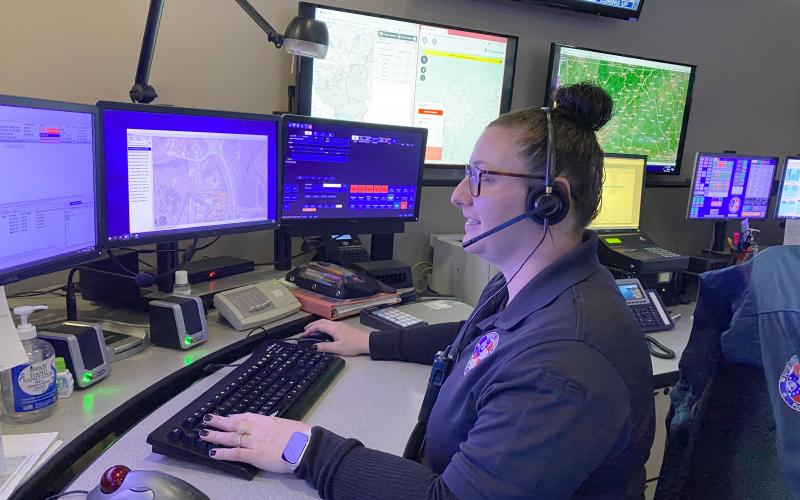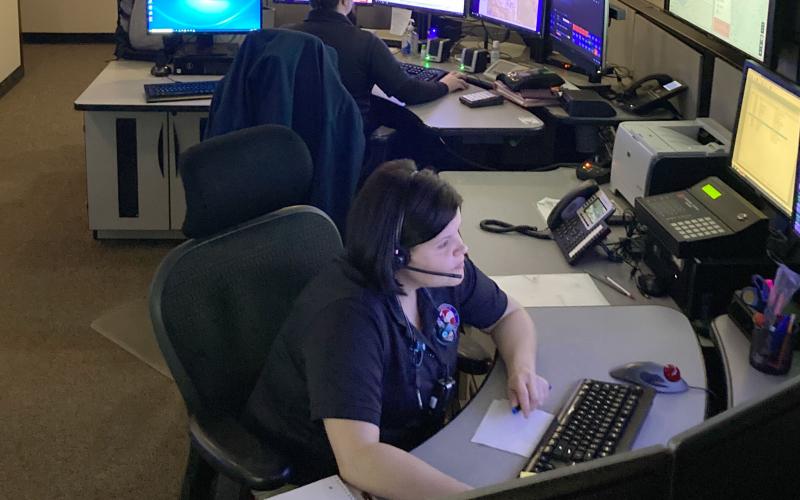When there’s an emergency in White County, law enforcement, firefighters and EMS crews are soon to follow.
Before responders head out to help, however, it’s E-911 dispatchers who serve as first contact for a person calling in distress. In a matter of moments, they must gather information, assess the situation and direct the needed personnel and resources to the scene.
“These ladies and gentlemen that work in there work very hard serving our community each and every day,” says White County Public Safety Director David Murphy. “We appreciate the work and extra training and things like that that they do to make us a safer community.”
The second week in April is observed as National Public Safety Telecommunicators Week to honor the often unseen contributions of emergency dispatchers.
The White County News recently spoke with county 911 Division Chief Leah Sullens about the work that goes on in the dispatch center and how residents can make it easier to get help on the way.
As the county population has grown, so has the call volume, Sullens says. The county’s 911 Central Communications Division handled 108,816 calls in 2020, according to a public safety annual report.
Calls can include minor incidents or major accidents, but dispatchers sometimes receive questions about whom to contact about utility bills or the status of a community festival. Those are taken in stride, but these inquiries should be directed to the center’s administrative line at 706-865-0911.
“For 911 lines, we want true emergencies,” Sullens says.
The dispatch center has three to four workers on a given shift. Sullens explains some callers believe that when a dispatcher continues to ask questions, there is a delay in sending assistance. Instead, dispatchers can work together on a single call.
“The person taking your call may not be the person that is actually sending you help,” Sullens says.
One person can enter information into the computer system for a call to be dispatched, and another will continue with the caller.
“It’s not that we’re not sending assistance immediately,” Sullens says. “It’s that we need more information to make sure we can update our responders so they bring the correct equipment and we send the correct agencies that you need.”
In the case of an incident happening while on the road, Sullens says it’s important for callers to provide their location, whether its a physical address nearby, the closest intersection or number that can be seen from the road.
Residents who only have a mobile phone will also need to provide an address even when calling from home. Sullens says dispatchers can get a general idea of a mobile caller’s location, but it’s not exact. She says about 85% of calls received are from mobile phones, which take additional time to verify the location.
“I encourage especially those with major medical problems, maybe the elderly at home, to have a landline,” Sullens says. “So that if they pick up and dial 911, that address comes up – and it doesn’t when you call on a cell phone.”
Sullens adds that those with landline phones can also have helpful notes associated with the number and address. For instance, if a resident is elderly, has medical conditions or major allergies, that can be given in advance for 911 records.
That information can be provided by calling the administrative line at 706-865-0911.
“If we were to get a silent call (no one speaking), we would know there’s somebody there with a history of a lot of medical problems, and that way we would send law enforcement and a med[ical] unit out automatically.”


